A bike chain is the rider’s direct link to forwarding propulsion. Despite this, chains are often overlooked. In this article we are going to cover why it is important to keep your chain in tip-top shape, and how you can do it!
What use is a rusty bike chain? Pretty much no use.
Cyclists with poorly kept chains that are rusty, or worn out will notice that their gears skip while shifting, the chain bounces around or comes off, the bike pedals poorly, and more! It’s crazy that such a little piece can alter the performance of a bike so much! Do not buy a cheap chain. Get a decent quality one and keep it in good condition!
The first step towards proper chain maintenance should always be chain oil. Let’s see, how to clean bike chain.
We’ve put together a guide to bike chain cleaning, plus we’re sharing the best way to clean a bike chain and everything that’s important about chain lube.
Contents
- Step 1 – Clean
- Step 2 – Oil
- WET vs DRY vs WAX Lube, What’s The Difference?
- Bike Chain Lube Technologies
- Mountain Bike vs Road Bike Chain Oils
- What Not to Use As Lube
- How to Remove a Bicycle Chain?
- How to Clean the Bike Chain
- How to Tighten A Bike Chain
- Bike Chain Oil Recommendations
- Frequently Asked Questions
Step 1 – Clean
You can also use the bike chain cleaner or brush. I use cloth. Just run the chain backward several spins.
Step 2 – Oil
Choose the right oil and use it!
WET vs DRY vs WAX Lube, What’s The Difference?
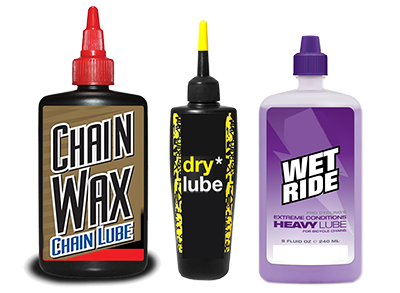 A wet lube is the most traditional style of lube. It has similar properties to most car oils and is great for autumn and winter use as it repels water and resists corrosion from salts. Wet lubricants are also best at keeping drivetrain noise down.
A wet lube is the most traditional style of lube. It has similar properties to most car oils and is great for autumn and winter use as it repels water and resists corrosion from salts. Wet lubricants are also best at keeping drivetrain noise down.
Dry lubes, on the other hand, are best for summer or dry dusty environments. They usually go on wet but dry on and become waxy. Yes, a wax lube is a form of dry lubricant. Dry chain lubricants don’t have dirt and debris stick to them as easily as wet lubricants do. However, dry lubricants also need to be applied more often than wet lubricants.
Wax lube is just a form of dry lube. You can buy chains that have wax on from the factory or apply it yourself.
Related: All you need to know about bike groupsets
Ceramic Bicycle Chain Lube – What Is It?
Ceramic chain lube is the most recent development in bike lube technology. In these types of lubes, ceramic particles build up and form a no friction layer where there would usually be metal-on-metal contact. This quiets the bike down and creates a smooth running drivetrain.
Bike Chain Lube Technologies
There are almost too many technologies in bike lubes to talk about!
 Each company has its own idea as to what chain lube should accomplish, on top of keeping the chain in good condition of course. Some of these technologies are as follows:
Each company has its own idea as to what chain lube should accomplish, on top of keeping the chain in good condition of course. Some of these technologies are as follows:
Cleaners – these repel dirt and grime to keep the chain as clean as possible. Some lubes are made with their primary focus on keeping the chain clean.
Water Repellent Properties – Water-repellant chain lubes just make sense, and ensure you won’t find rust on your chain. This is why wet lubes almost always completely repel water. You need this if you ride in wet weather environments.
Ceramic – Ceramic will coat the metal surfaces of your chain and gears to create a low friction surface with as little metal-on-metal contact as possible.
Teflon – Teflon-based chain lubes are the most common as using Teflon to lubricate creates almost no friction. However, it is too thick to be used alone as chain lube so it is mixed with other oils and solvents for penetration purposes.
Dry or drip tube?
There are two different forms of bicycle chain lube as far as application goes. There is the kind which is applied dry, these are not very common and take a little more effort to properly apply. Then there are the typical drip tube application lubes.
These go on wet and quite easily. I prefer the classic trip tube style of lubricant because it is quick, easy and works well. This is one of those things you can find out for yourself. Some prefer dry applications but for the most part, unless you are an expert, I recommend using a drip tube.
Mountain Bike vs Road Bike Chain Oils
Contrary to a lot of belief, road bikes and mountain bikes should use the same chain oils for the same reasons. It is all based on riding conditions. If there is a lot of dust and grime, use a dry lube. If there is a lot of water, or you need the lube to last as long as possible, use a wet lube.
Mountain bike and road bike chains are made almost identically, so using the same lubes is expected and the correct thing to do.
Related: Best Bike Repair Stands
What Not to Use As Lube
If you’re not familiar on how to clean bike chain, let’s talk about it. There is a lot that people say they put on a chain, but I’m going to keep it simple.
Do not use anything that isn’t specifically designed for use on a bike chain. There are simply no bike chain oil alternatives. There are hundreds of appropriate options, so choosing something like WD40 for convenience just seems silly.
The lube has to be the right viscosity or it simply will not do its job right.
How to Remove a Bicycle Chain?
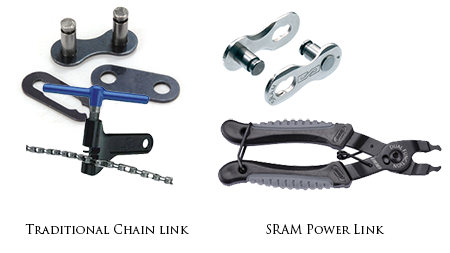
SRAM
SRAM and some other brands feature special links known as “master links”. These master links are designed to be removed with a special set of pliers.
Essentially you pull the internal sections of the master links together so that the pins slide on the master link connectors until they can just pull apart.
If you don’t have the correct pliers, try threading an old gear cable through and pulling each end to bring the links together. This is not as easy but works in a pinch.
Shimano
Shimano chains can only be removed by pushing out a pin using a bike chain tool.
Once the chain is separated, to put it back together you will need a new Shimano pin (also known as a rivet), that also has a guide so that you can push it back through with the chain breaker tool.
How to Clean the Bike Chain
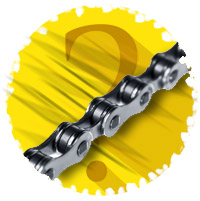 Bike chain cleaning is a fairly simple process. Cleaning your bike chain is best done on your bike. This is because most modern chains aren’t supposed to be removed until they are getting replaced by a new one.
Bike chain cleaning is a fairly simple process. Cleaning your bike chain is best done on your bike. This is because most modern chains aren’t supposed to be removed until they are getting replaced by a new one.
The best way is to use a proper chain cleaning tool that features rotating brushes that you run your chain through, this in combination with a good bike degreaser, and then a wipe down with a microfiber cloth should leave your chain free from grime and ready for some lubricant.
If you don’t have these, an old firm bristled brush, or even a toothbrush will work well for scrubbing. Then use a little soap and water to help rinse away the grime. Make sure all of the soap is washed away before drying and then lubing the chain.
Read More: Why Bike Maintenance Is Important
How to Tighten A Bike Chain
Tightening a bike chain might sound pretty terrifying for beginners, but the process is not too complicated.
First thing first, the bike should be flipped upside down (on the saddle and handlebars) on stable ground.
Then the next thing is to find the derailleur screw, which is located at the back of the derailleur. The next thing to do is to screw clockwise. This increases the chain’s tension.
If this is not enough, it’s worth adjusting the rear tire. In order to do that, disconnect the brakes and slide the rear axle towards dropouts. Remember, slow and steady – otherwise, the chain might get too tight.
After that, it’s just a matter of putting everything back together!
How To Tell A Chain Is At The End Of Its Life?
There are obvious signs to look for that will tell you when it’s time for a new chain.
First off is rust. If the chain is rusty, throw it away. The next thing to do is think about how it rides. Is it loud? Is the chain skipping around? These can be signs of wear. Be sure to check for physical bending and stiff links as well.
A sure fire check is to see if the chain has stretched too far. Chain stretch can be measured using a chain stretch tool or a ruler. To use a ruler, line up one rivet at the 0 inches mark, then count 23 rivets further and the last one should end up at the 12 inches mark. If it is more than 1/16th off, your chain has stretched too far and needs to be replaced.

Bike Chain Oil Recommendations
Best dry lube – Finish Line Dry
 Finish line dry lube is one of those bike chain lubes that you just can’t go wrong with. It is pretty typical as far as dry lubes go. It goes on wet, and then dries to form a synthetic film coating on your chain. This is the best option if you only want to use one lube for all conditions as it stay on well and does an excellent job at keeping your chain from getting clogged up with dust and grime. When you wash your bike all of the stuff you want gone just rinses right off!
Finish line dry lube is one of those bike chain lubes that you just can’t go wrong with. It is pretty typical as far as dry lubes go. It goes on wet, and then dries to form a synthetic film coating on your chain. This is the best option if you only want to use one lube for all conditions as it stay on well and does an excellent job at keeping your chain from getting clogged up with dust and grime. When you wash your bike all of the stuff you want gone just rinses right off!
Best wet lube – Finish Line Wet
This stuff is exactly what you want for any wet weather riding. The lube goes on wet, and never dries out. The best part about it is it totally repels water, and doesn’t stop working! It is one of the most lasting lubricants I have used. If you are a wet weather rider or put a lot of torque on your chain, this is the choice for you.
Best Wax lube – Finish Line Ceramic Wax
In case you haven’t noticed, we are a big fan of Finish Line products. They just seem to make great lubricants, and the wax is no different. This is the ultimate lubricant for dusty environments. Dirt finds it hard to stick to a chain with this wax lube on it. This lube also builds a ceramic coating on all areas of friction which helps make everything run as smoothly as it should.
Frequently Asked Questions
Here is where we help you out by answering some of the most popular questions that get asked when it comes to chain maintenance and lube.
How often should bike chains be cleaned?
Bike chains should be cleaned roughly every week, but it can depend on different factors (for example frequency of use and weather). Bike chains can be cleaned after every ride, but they should be cleaned after riding in wet conditions or after every 100 miles.
How to clean a bicycle chain?
Cleaning a bike chain is fairly simple and only consists of a few steps. First, brush the chain with some sort of brush to get the grime off. After that just relubricate the chain and wipe the excess off.
You don't have to lubricate the chain every time (every 2-3 times is good if you clean it once a week), but it's important not to skip this step in the long run.
How often should I lube bicycle chain?
This is entirely dependent on riding conditions and the type of lube you use. If you ride often, once a week is likely enough. The most important thing is to clean your chain frequently via a quick wipe down (ideally after every ride).
Lubricants can last quite a while. However, the best way to go about lubing a chain is to do it lightly, and often. Some people put one heavy coating on and leave it for weeks. I do not recommend this as it can start to clog up your chain.
What is the best oil to use on a bicycle chain?
This depends on the conditions you are riding in. Our favorites are Finish Line’s products. However, most bike specific chain lubes will work well for you.
Is it OK to use WD40 on a bike a bike chain?
No! Never use WD40 on a bike chain. It is too thin to stay on the chain and lubricate it properly, and it attracts dust and grime like no other. Stay away from WD40 as a lubricant.
What are bike chain lube alternatives?
We do not recommend using any alternatives to proper bike chain lube. However, some people use chainsaw oil or even extra virgin olive oil when they can’t get a hold of the real deal. These are not recommended as they attract dirt like crazy, but in a pinch, it is better than a dry chain.
How to clean a bike chain with household products?
The best thing to use is of course bike specific cleaners. However, if you don’t have any, you can use automotive degreaser. You may also use water and dish soap. A little elbow grease goes a long way here! Just don’t forget to dry the chain and then lubricate it when you are done.
How often should I wash my bike chain?
Ideally, you should give your chain a quick wipe down every time you ride. Give your chain a proper clean whenever it starts to look grimy. This will depend on your riding conditions and how often you ride. If you hear dirt particles crunching in your chain when you pedal, you’ve left it too long!
What happens when I don’t lube my chain?
When you don’t lube your chain, a few things happen. First off, it dries out. All chains come factory lubricated, and after you ride it for a bit, that wears away. Once the lube is gone, the chain will start to wear away. The metal-on-metal contact causes the chain to heat up and results in the gears and chain to rub and wear. The chain will also start to rust.
Once it’s worn and dry, gears will skip, and pedaling will become much less efficient. Noise will also increase. Eventually, the chain will become brittle and break.
How to fix a bike chain?
When it comes to fixing broken bike chains, first consider if it's even worth fixing.
But if you're stranded on a ride, miles from home, then multi-tools come in handy (especially those with bike chain tool attachment).
In those cases, you should remove the broken part of the chain, and attach it back together, but it's important to note, that this way, some gears are off-limit, as the chain is a bit shorter.
In short, make sure to lube your chain! I hope now you know, how to clean the bike chain.

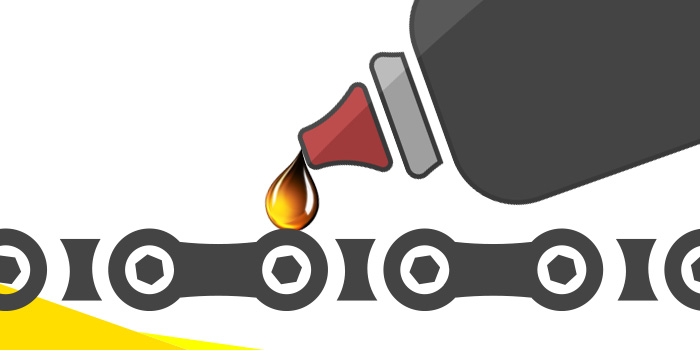
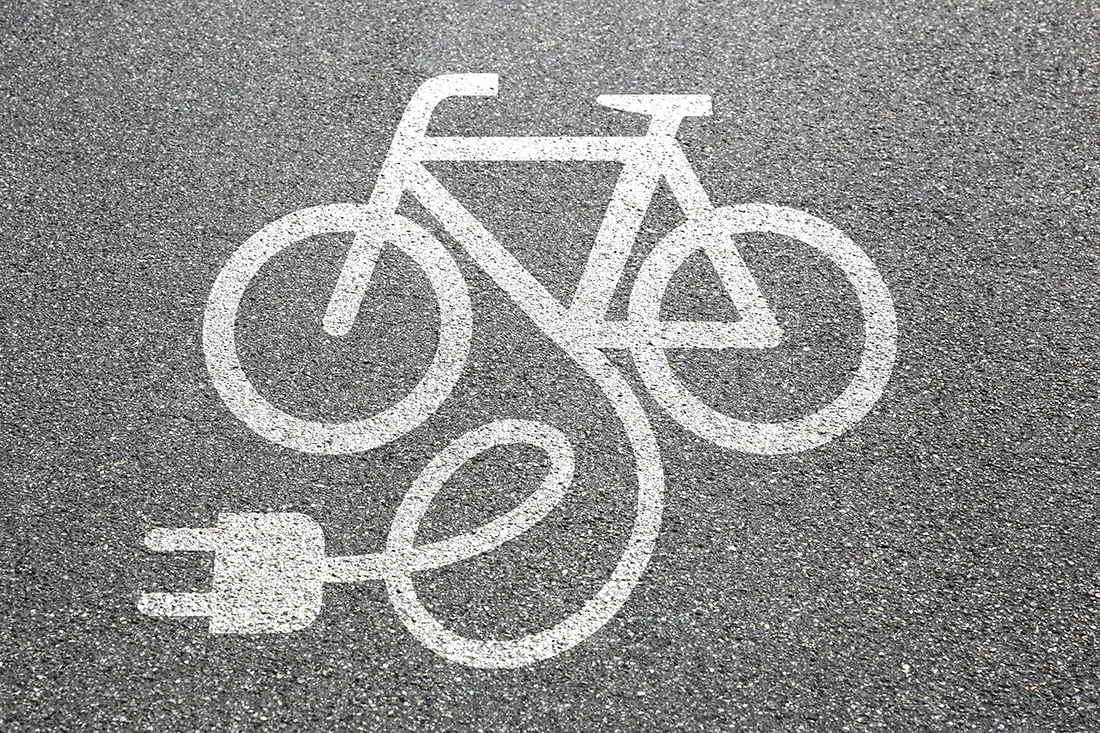
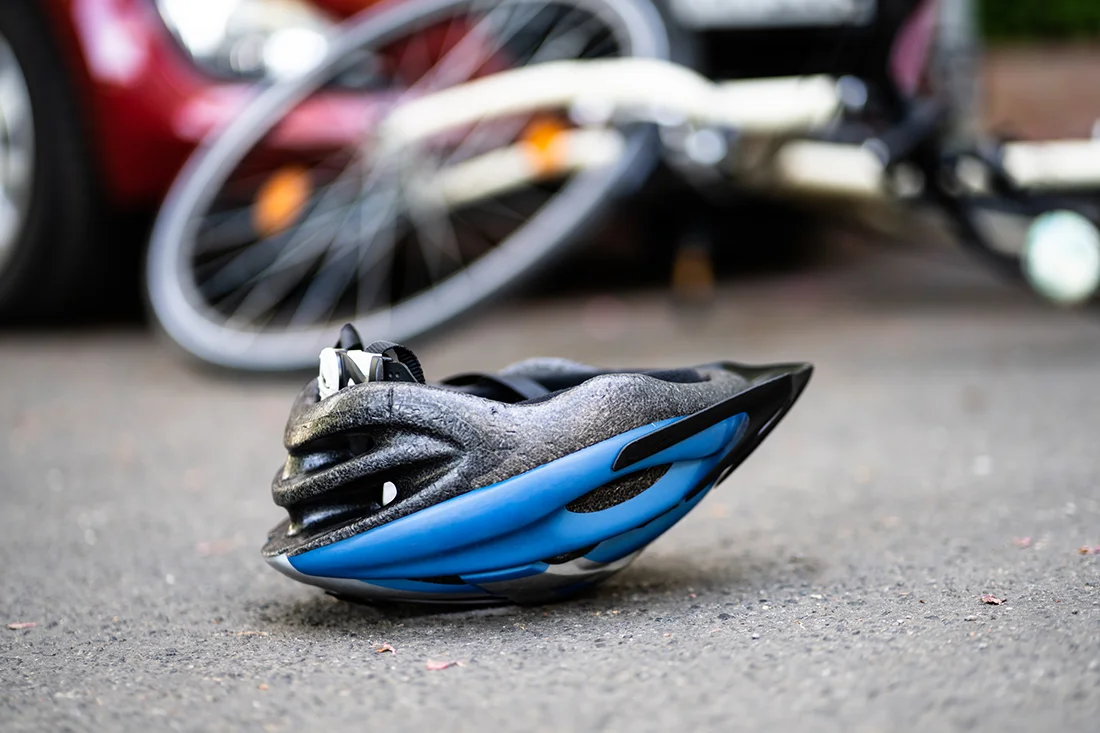

I love getting my chain really clean and spent a lot of time cleaning. Thanks for this tips.
Hi BikeValy,
It’s a pleasure to be of help to cyclist 🙂 Cheers and keep riding!
I love getting my chain really clean and spent a lot of time cleaning. Thanks for this tips.
Hi David,
Cleaning your chain or your drivetrain can prevent failure. Ensure that they are always running smoothly. Great to know you do this.
You got me when you said that your bicycle’s chain needs to be replaced and thrown away if it has a sign of rust. With that in mind, I’ll be sure to bring my bike to a bicycle shop before using it. My bicycle has been stuck for months since I was out of the country due to the demands of my job. When I checked it last week, I saw that its chain has buildups of rust and grime that I can’t remove at all.
It’s definitely better to invest a small amount into a new chain, than riding with it and paying a lot to replace your whole drivetrain. Plus, a rusty chain is a safety hazard as well. Good call, Ellen, glad I could help. Happy riding. 🙂